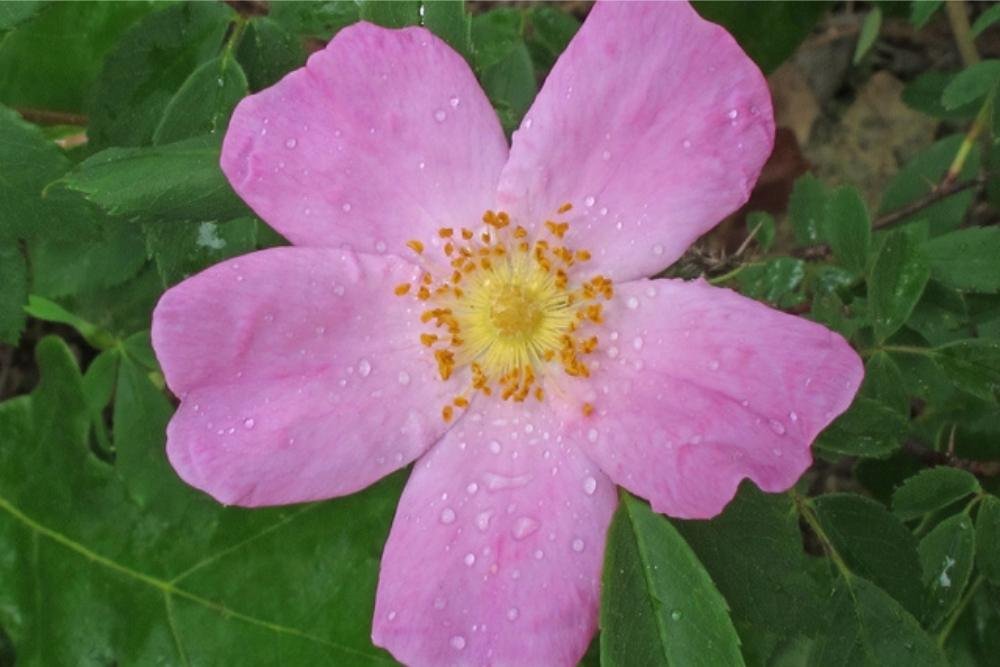Carolina Rose
Image by Alan Cressler
Scientific Description: Carolina Rose – Rosa Carolina – is a member of the Rose (Rosaceae) family and is a perennial, deciduous, shade-loving flowering shrub that has many 2-3-inch flowers from June through August. Of course. If given more sun, it will produce a myriad of large, pink blossoms. It is native to the eastern and central United States and grows to a height of 3 to 6 feet tall and a diameter of 5 to 10 feet.
An established Carolina Rose has a large and long taproot, which makes this species very drought tolerant. It is found in hardiness Zones 3 through 8, and since Chattanooga is in Hardiness Zone 7, this species will do well in our area.
Habitat Value: The Carolina Rose is favored by many species of pollinating insects, including bees and butterflies, as well as many species of birds. With the straight, needle-sharp prickles, this species is deer resistant. This showy, fragrant species is often used as a hedge, an accent species in gardens or as a border.
The Carolina Rose should only be pruned in winter or early spring so as not to interrupt the flowering cycle. Deadheading of this plant will not produce further blooms.
The Carolina Rose is susceptible to some types of disease and insect invasions. These include black spot and powdery mildew, as well as aphids, beetles, scale, thrips, leaf- hoppers, and spider mites. Perhaps the best care for this species is the timely removal of diseased leaves and flowers, good air circulation and periodic fungicide applications during the growing seasons. In addition, mulch application in the warmer months of growth will retain moisture in the soil.
Landscape Value: Since the Carolina Rose is such a versatile, tolerant shrub, it can be used in a variety of landscapes. Once established, there is little maintenance that needs to be done. This is a plant that blooms prolifically throughout the summer, has a great aroma, and attracts butterflies, bees, and other insects constantly. Throughout the seasons, this is an amazing native that can become a star of the show as they finish blooming and take on the most beautiful fall foliage!


